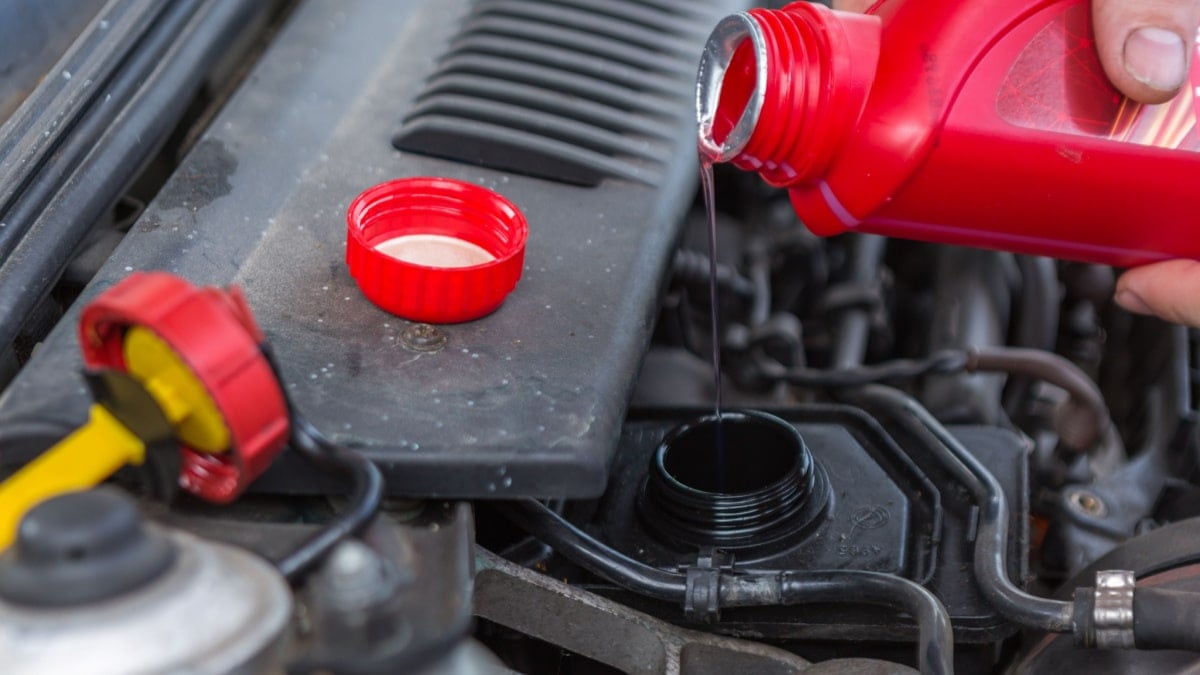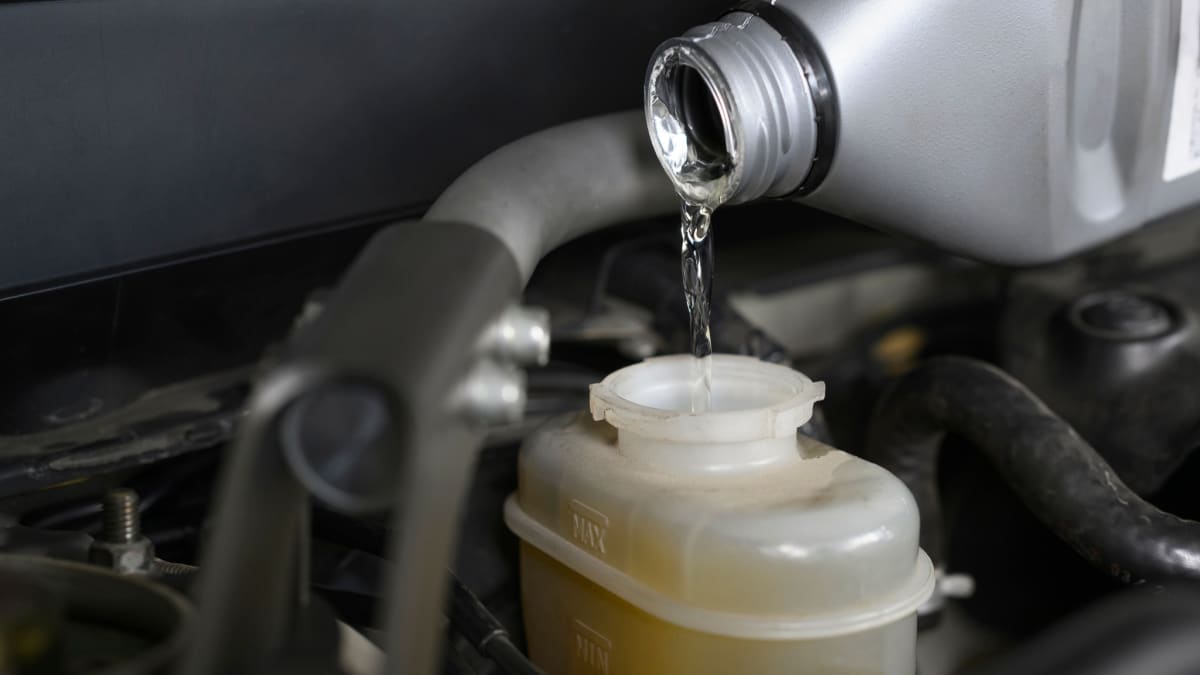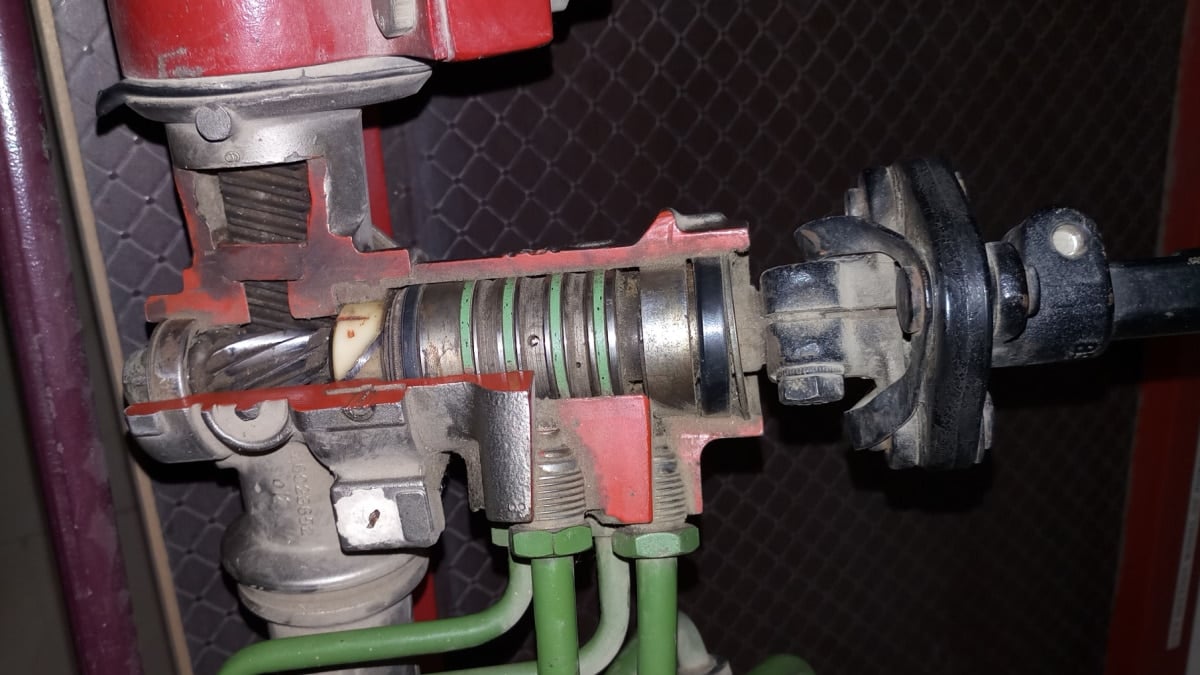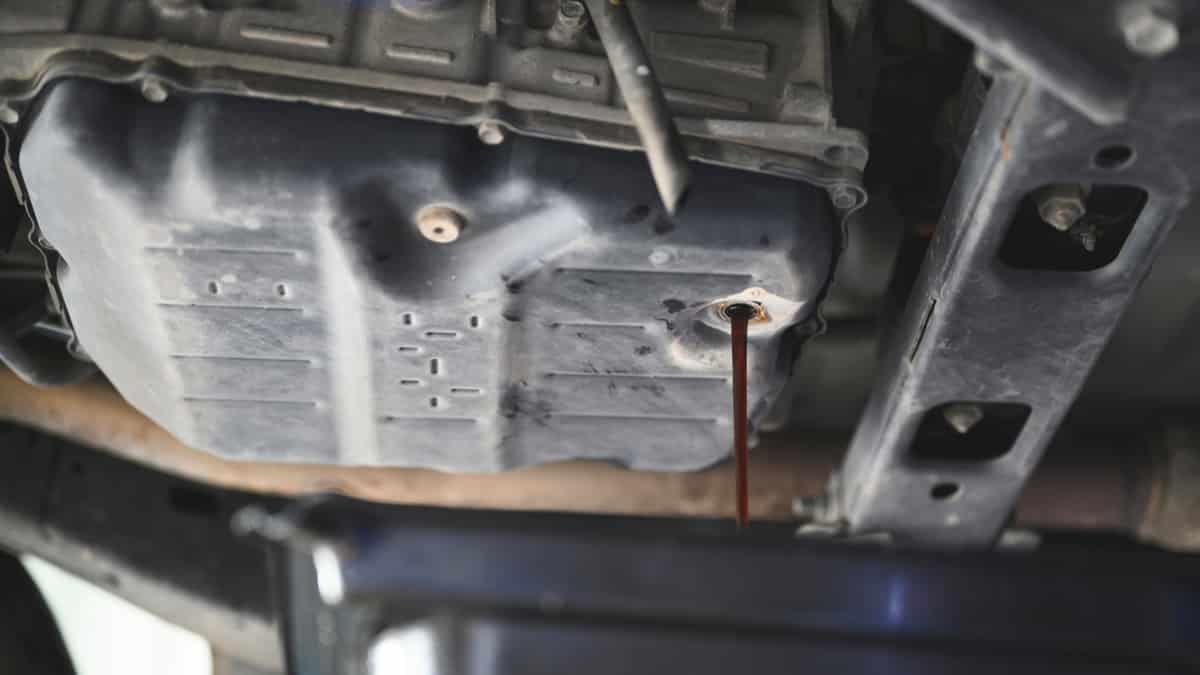Power steering was first invented in 1951, but it took many more years before the feature was included with every vehicle. If you’ve ever driven without power steering, you know how difficult it can be to muscle the car where you want it. Thankfully, this isn’t something we need to deal with today, as long as we maintain our vehicles with the right power steering fluid types.
I go through the various types of power steering fluid to teach you which kind of power steering fluid type you need, and look at the steps for replacement. By keeping this system working at its best, you can ensure a smooth, easy ride.
Power Steering Fluid Types
The most common power steering fluid types are the ATF transmission fluid, synthetic-based and universal power steering fluid. All of these power steering fluid types have their own properties, and it’s important to choose the right type for your car.
Here is a more detailed list of the different power steering fluid types:
1. ATF Transmission Fluid
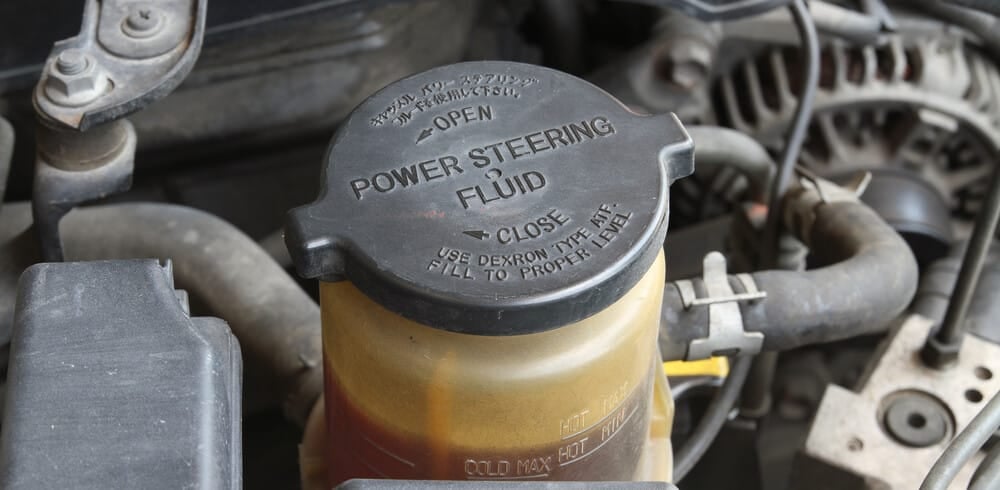
Some vehicles are compatible with automatic transmission fluid. In these vehicles, you can use Dexron, Mercon, ATF+4, Type F and other varieties of transmission fluid for your power steering.
Most domestic vehicles from the 1970s until the mid-1990s used automatic transmission fluid. These include Ford, GM and Chrysler vehicles. Additionally, any United States-built Volkswagen models from 1984 until 1989 also use automatic transmission fluid.
2. Synthetic-Based Hydraulic Fluid
Japanese and European vehicles maintain a different standards with the power steering fluid, requiring a high-performance synthetic-based fluid to meet ISO 7308 and DIN 51 524T3 standards. Volkswagen, Volvo, Porsche, Mercedes-Benz, BMW and Audi all hold to a different standard, based on the year, make, and model of the vehicle.
Additionally, Subaru, Toyota, Nissan, Mitsubishi and Honda have unique power steering fluid specifications. The synthetic fluid is built to flow well, even at lower temperatures, thereby improving pump lubrication and extending the system’s life.
3. Universal Power Steering Fluid
There is also a universal power steering fluid option that can be used in many modern vehicles. However, a few manufacturers recommend putting special additives in this fluid to add pump and seal lubricity or to provide corrosion protection.
To find the appropriate power steering fluid for a vehicle, you want to look at the power steering reservoir cap. The information should also be listed in the car owner’s manual.
RELATED: Power Steering Fluid Colors – What Do They Mean?
When Should I Change Power Steering Fluid?
Because power steering fluid is used in a clean environment, it will last longer than many other automotive fluids. In fact, the majority of manufacturers don’t list a recommended service interval for their power steering fluid.
With that said, it’s a general rule of thumb to replace the power steering fluid every 50,000 miles or 5 years, whichever comes first.
After this long, the fluid begins to break down and you might notice contamination, which could affect the steering gear and pump. Additionally, the corrosion inhibitors become depleted. Combined with the high temperatures underneath the hood, it’s possible for the fluid to start oxidizing.
You can check your owner’s manual to see if the automaker specifies a changing interval or follow the recommended guidelines listed above. However, if the fluid appears dirty or dark, you should change it no matter how long it has been.
Just like any other automotive fluid, the power steering fluid is meant for lubrication. If it begins to take on debris and moisture, it won’t be as effective. Old power steering fluid can cause the pump to make noise and fail.
RELATED: Hydraulic vs Electric Power Steering – Differences, Pros & Cons
How to Check Power Steering Fluid Level

1. Locate the Reservoir & Pump
Before you can check the power steering fluid, you must know where to look. The power steering pump typically sits on one side of the engine, and is driven by a belt.
On the other hand, the reservoir is found on the top of this pump. In a few vehicles, the reservoir is remote and mounted on the inner fender, because there isn’t room on the pump for it. Make sure your vehicle is OFF before you proceed any further.
2. Remove the Cap
Before you take off the cap, it’s important to wipe away any debris or dirt from the area. You don’t want any contaminants getting into the fluid when the cap is off.
Carefully unscrew the cap to the reservoir. With the dipstick attached, or by using markings on the reservoir, check the fluid level. It might indicate FULL or have an ADD/LOW line.
For the most part, your vehicle should contain the same amount of fluid over the years. However, as your vehicle gets older, or if there is a small leak somewhere, you might notice lower fluid levels.
3. Add More Fluid
If the power steering fluid level is low, you want to add enough until it reaches the FULL marking. This fluid will expand as it gets hot, so you may have different markings based on if the system is HOT or COLD.
Do not overfill the fluid reservoir. Otherwise, the power steering fluid could start to leak from the system, especially as it gets hot and runs out of room in the reservoir.
RELATED: 6 Signs of a Bad Power Steering Pump (& Replacement Cost)
How to Change Power Steering Fluid
1. Drain the System
You must disconnect all of the hoses from the steering rack or gear and drain the fluid into a container. However, this could still leave some trapped fluid.
To get this fluid out, you would reconnect the system – except for the return hose – and add a small amount of fresh power steering fluid. Once you turn on the vehicle, the pump will push out the old fluid through this hose. Make sure you catch it in a container.
Additionally, you will want to cycle the steering wheel around with the pump turning to ensure the fresh fluid has taken over the old fluid.
2. Add Fresh Power Steering Fluid
Reconnect the return hose. With the old fluid removed, you are ready to add fresh power steering fluid to the system. Make sure you only use compatible fluid in your system.
3. Bleed the power steering system
Add fluid until it reaches the FULL mark. Start the car engine and turn the steering wheel fully to both left and right several times. Fill more fluid if the level drops.
Cost to Replace Power Steering Fluid
The power steering fluid replacement cost averages between $95 and $140 when you take your vehicle to the shop. However, you can do it yourself for just the cost of the new fluid.
However, if you don’t change the power steering fluid, you could end up with a damaged pump. To replace the power steering pump, you might spend several hundred dollars.
Can I just refill my power steering fluid?
Yes. If the power steering system is not completely empty, you can just refill the power steering fluid reservoir. However, if there are any leaks, you should repair it first. You do also want to use the right type of power steering fluid.
How do you know if you need power steering fluid?
The easiest way to know if your car needs power steering fluid is to check the level in the reservoir. There is usually a min and max mark on the reservoir, and if the level is below the low mark, you need to fill it. Also, if you hear bad noises coming from the power steering pump when you turn the steering wheel, this is also a sign that the level is low.
What happens if you have low power steering fluid?
If you have low power steering fluid, air will enter the hydraulic system, and this will cause jerky or rough steering. It can even cause damage to the power steering system. The most common part that can get damaged due to low power steering fluid is the power steering pump.
How do I know which power steering fluid to use?
The best way to determine which power steering fluid you should use for your car is to check your owner’s manual. You can also use auto part stores online and enter your license plate number, and they will tell you what power steering fluid to use.
RELATED: Power Steering Assist Fault – Meaning, Causes & Fixes
Categories: Engine, General, Maintenance, Suspension

